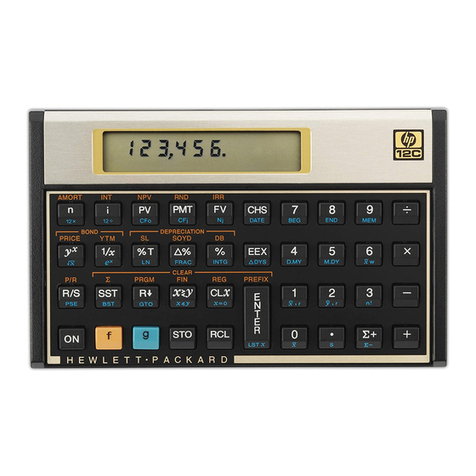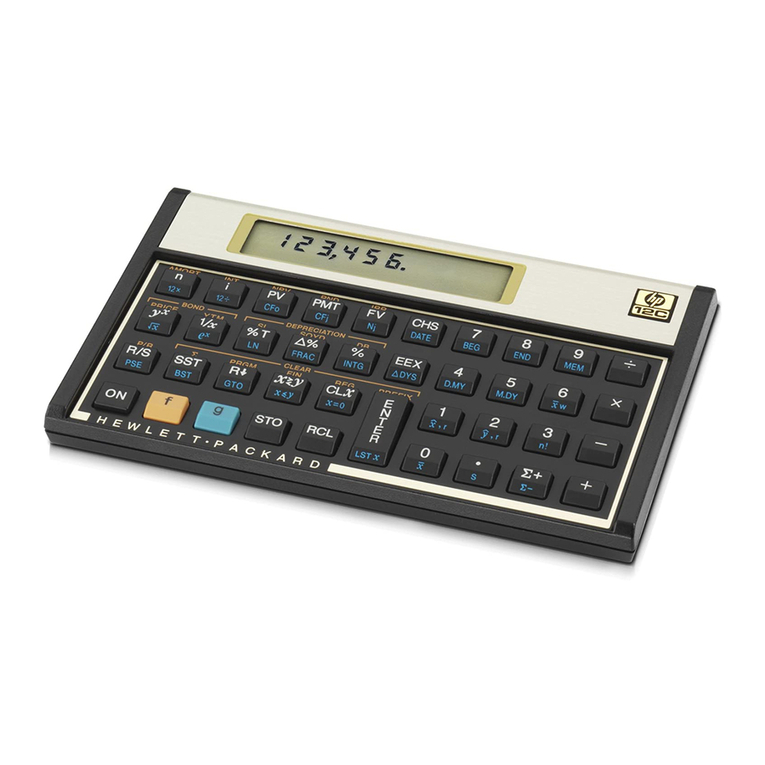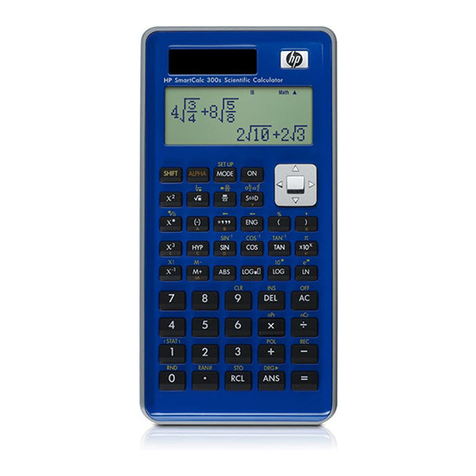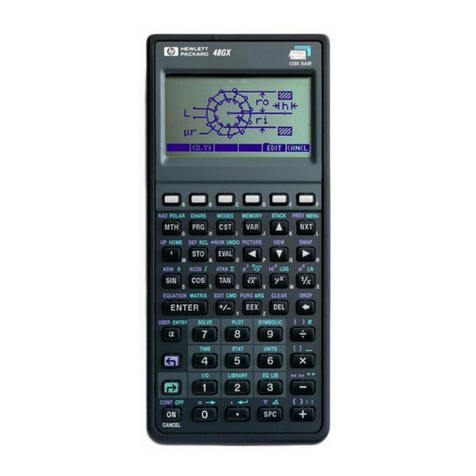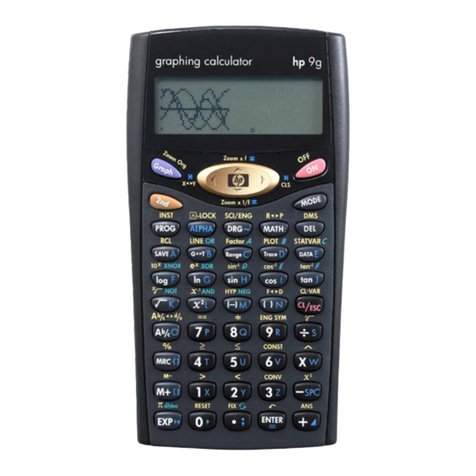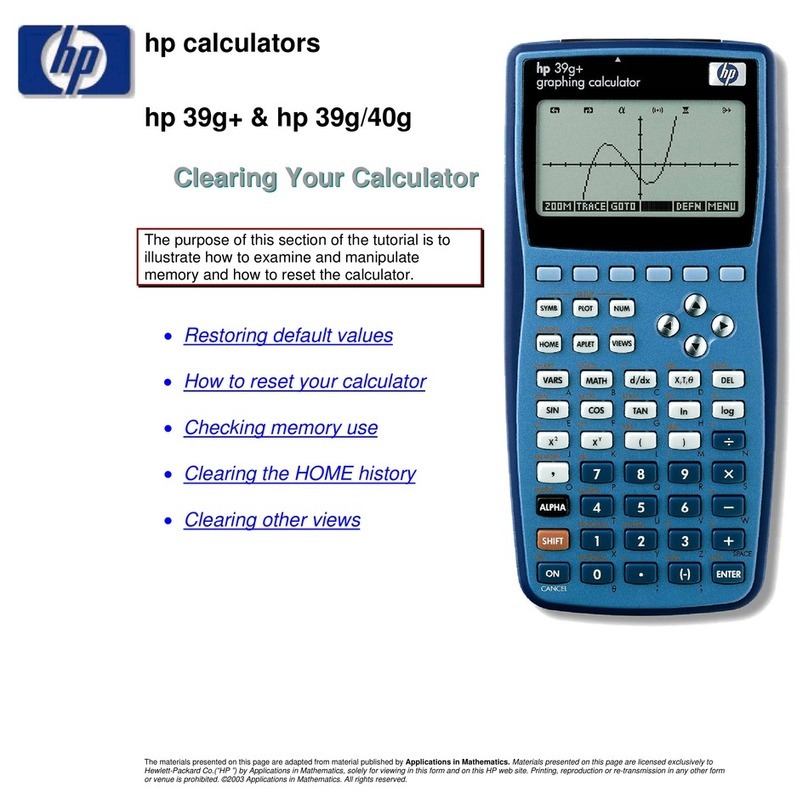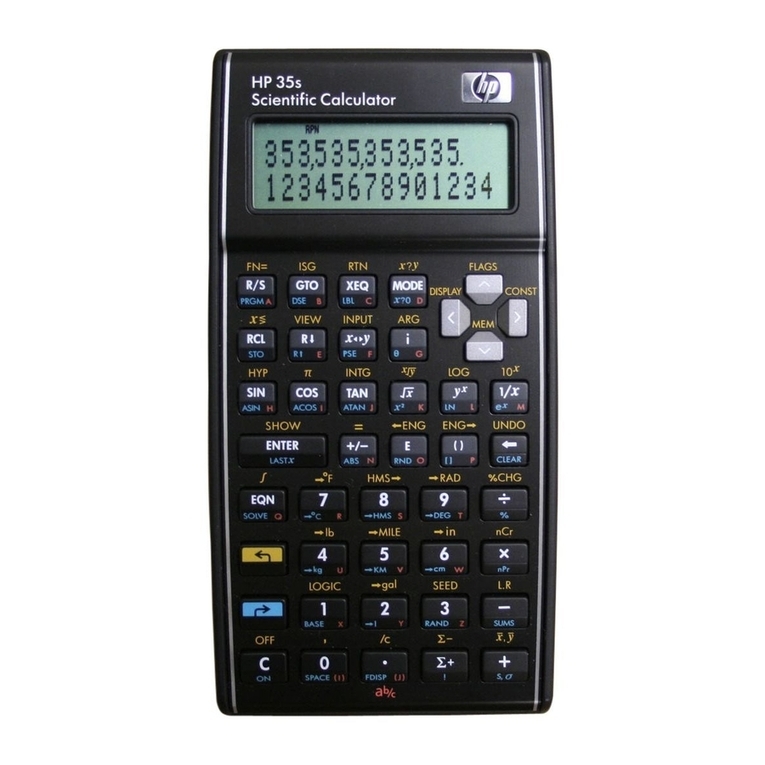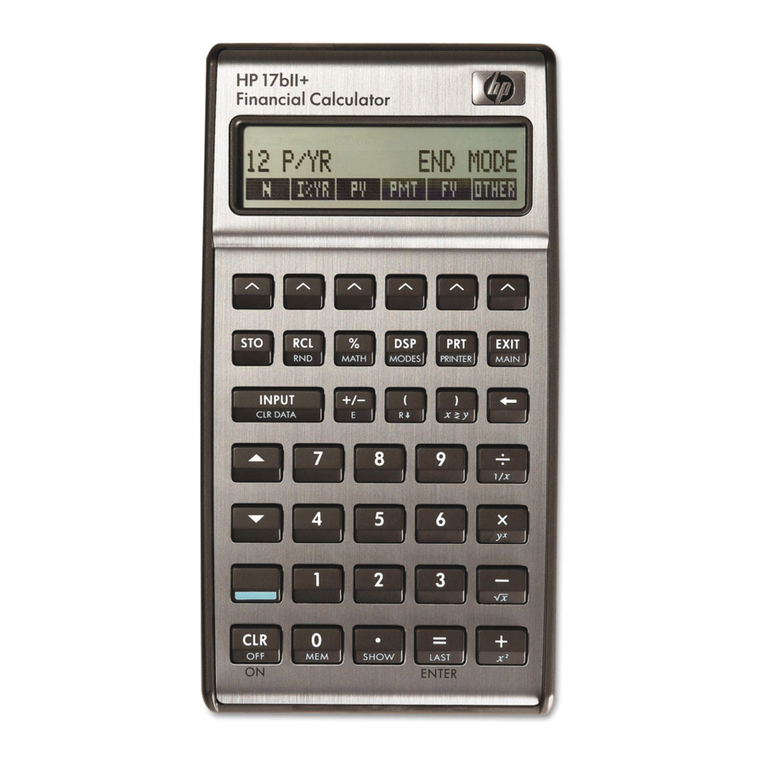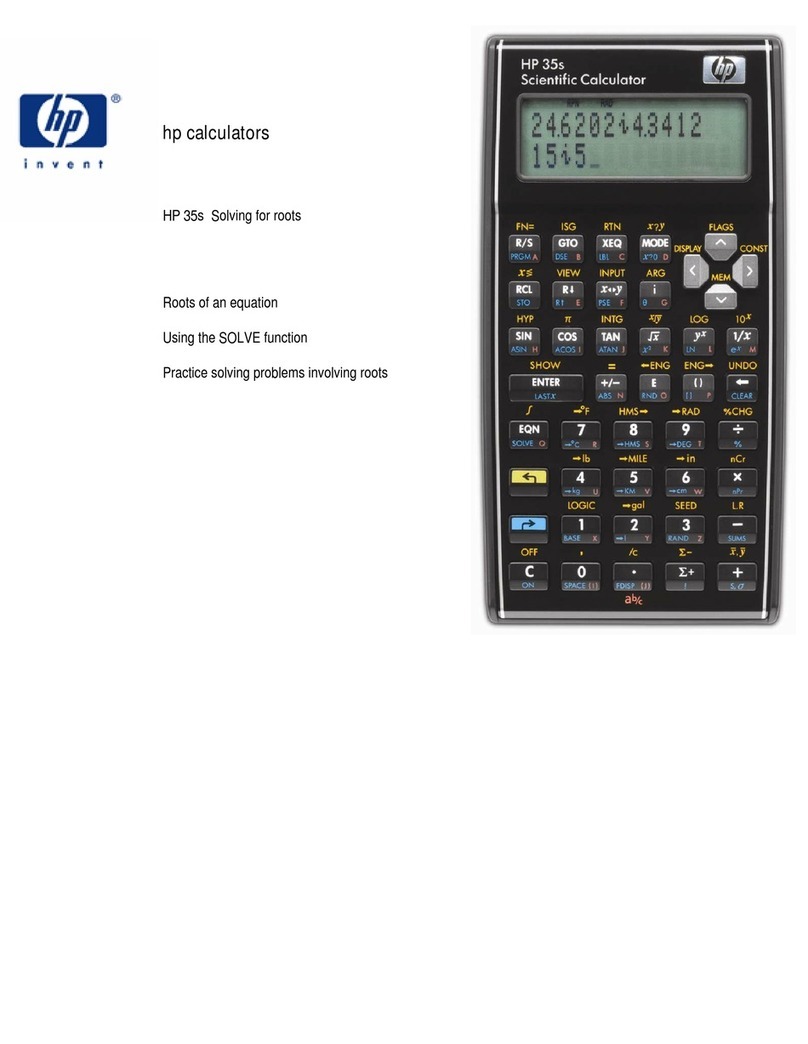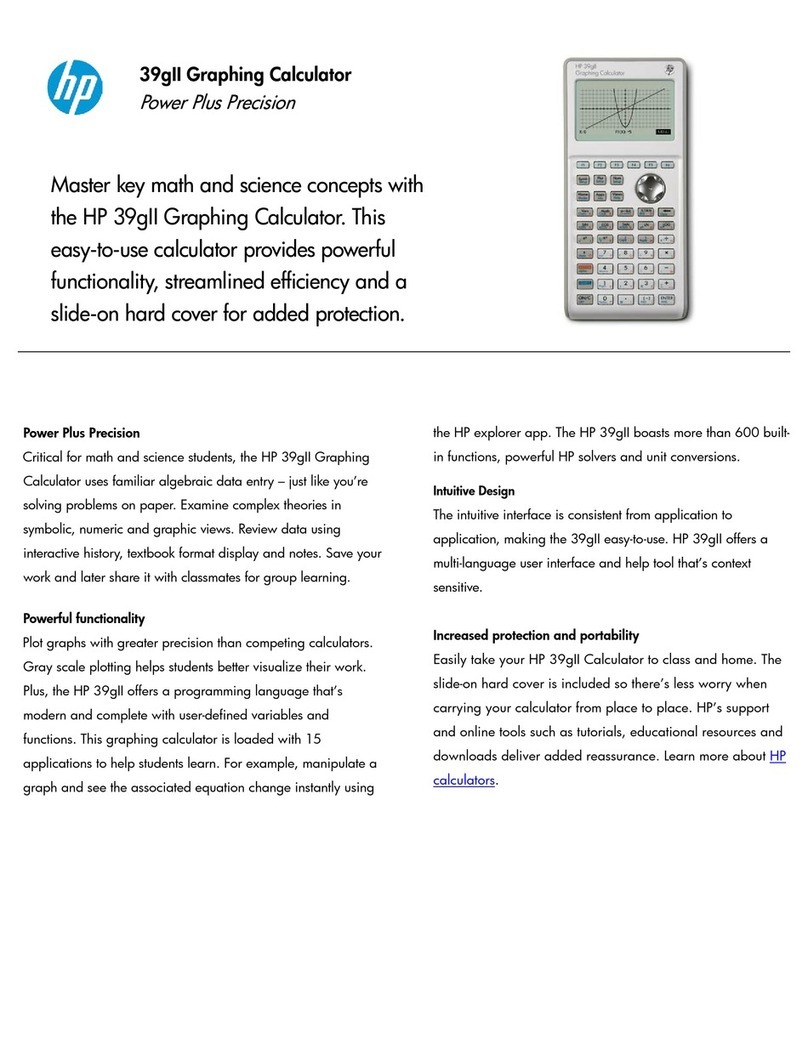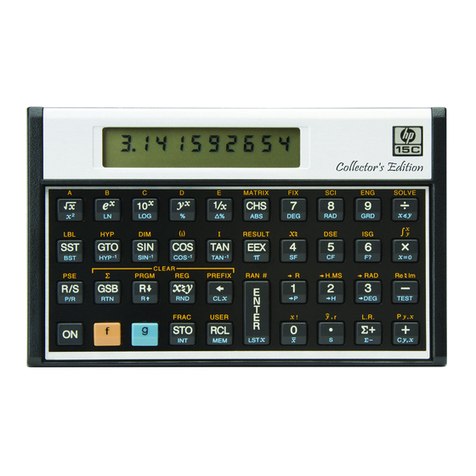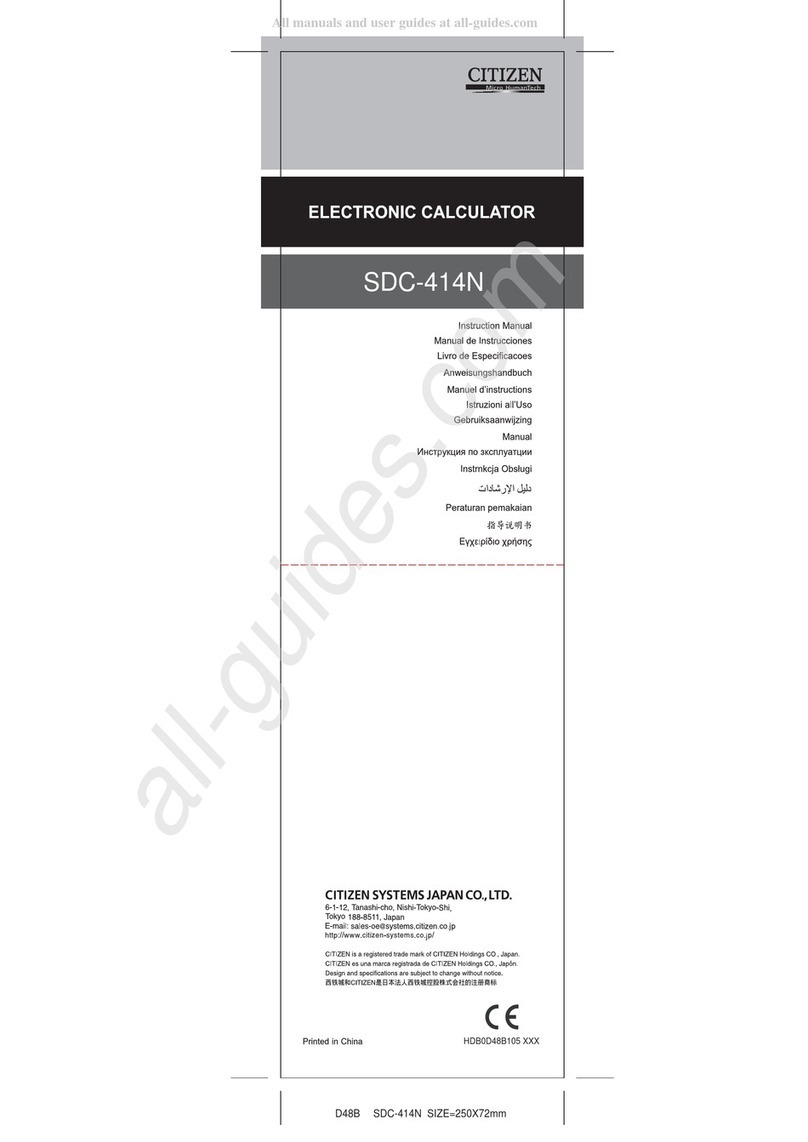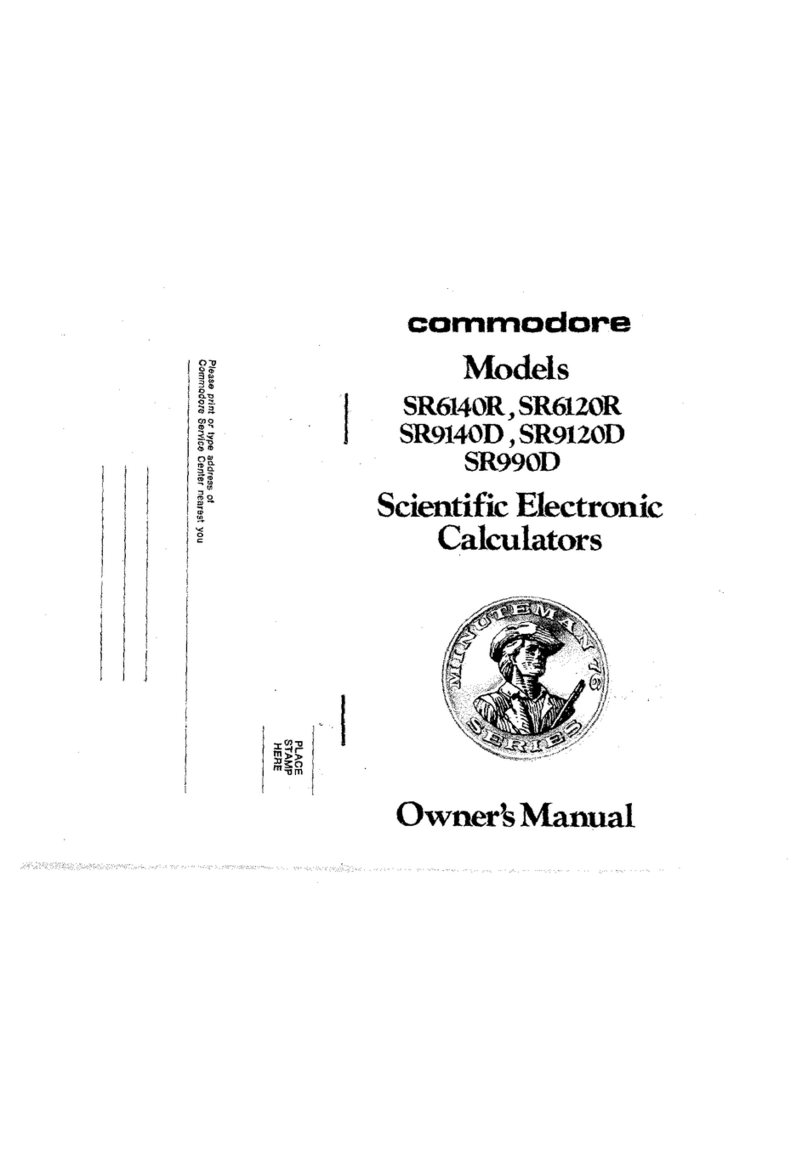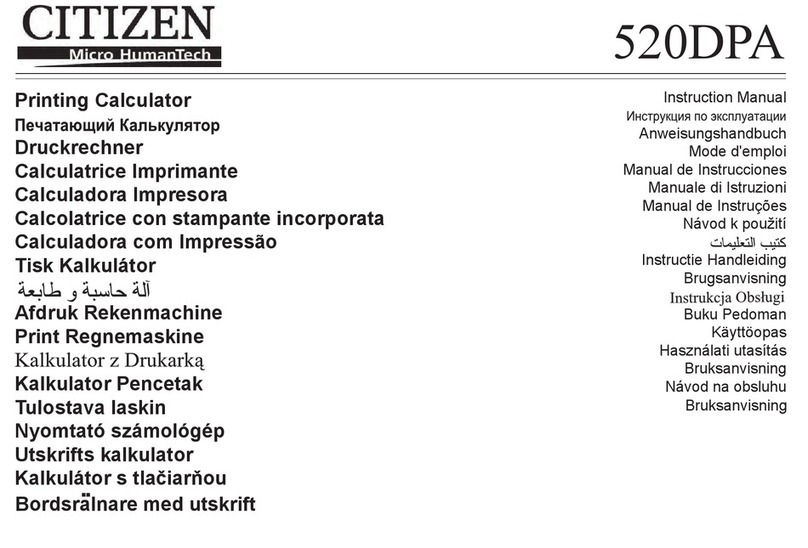Introduction
The
HP-15Cprovidesseveraladvancedcapabilitiesnever
before
combined
so
conveniently
ina
handheldcalculator:
•
Finding
the
roots
of
equations.
•
Evaluatingdefiniteintegrals.
•
Calculatingwithcomplexnumbers.
•
Calculatingwithmatrices.
The
HP-15C
Owner's Handbook gives
the
basicinformationabout
performing
theseadvancedoperations.
It
alsoincludesnumerous
examples
that
show
howtouse
these
features.
The
owner'shand-
book
is
yourprimaryreference
for
informationabout
the
advanced
functions.
This
HP-15C
Advanced
Functions
Handbook continueswhere
the
owner's
handbookleaves
off.
In
this
handbook
you
will
find
information
about
howthe
HP-15Cperforms
the
advancedcomputa-
tions
and
information
that
explains
howto
interpret
the
results
that
you
get.
This
handbookalsocontainsnumerousprograms,
or
applications.
Theseprogramsserve
two
purposes.
First,
theysuggestways
of
using
the
advancedfunctions,
so
that
you
might
use
thesecapa-
bilitiesmore
effectively
in
your
own
applications.Second,
the
programscover
a
widerange
of
applications—they
maybe
useful
to
youinthe
form
presented
in
this
handbook.
Note:
The
discussions
of
mosttopics
in
thishandbook
presume
that
you
already
understand
the
basic
information
about
using
the
advanced
functions
and
that
youare
generally
familiar
with
the
subject
matter
being
discussed.








